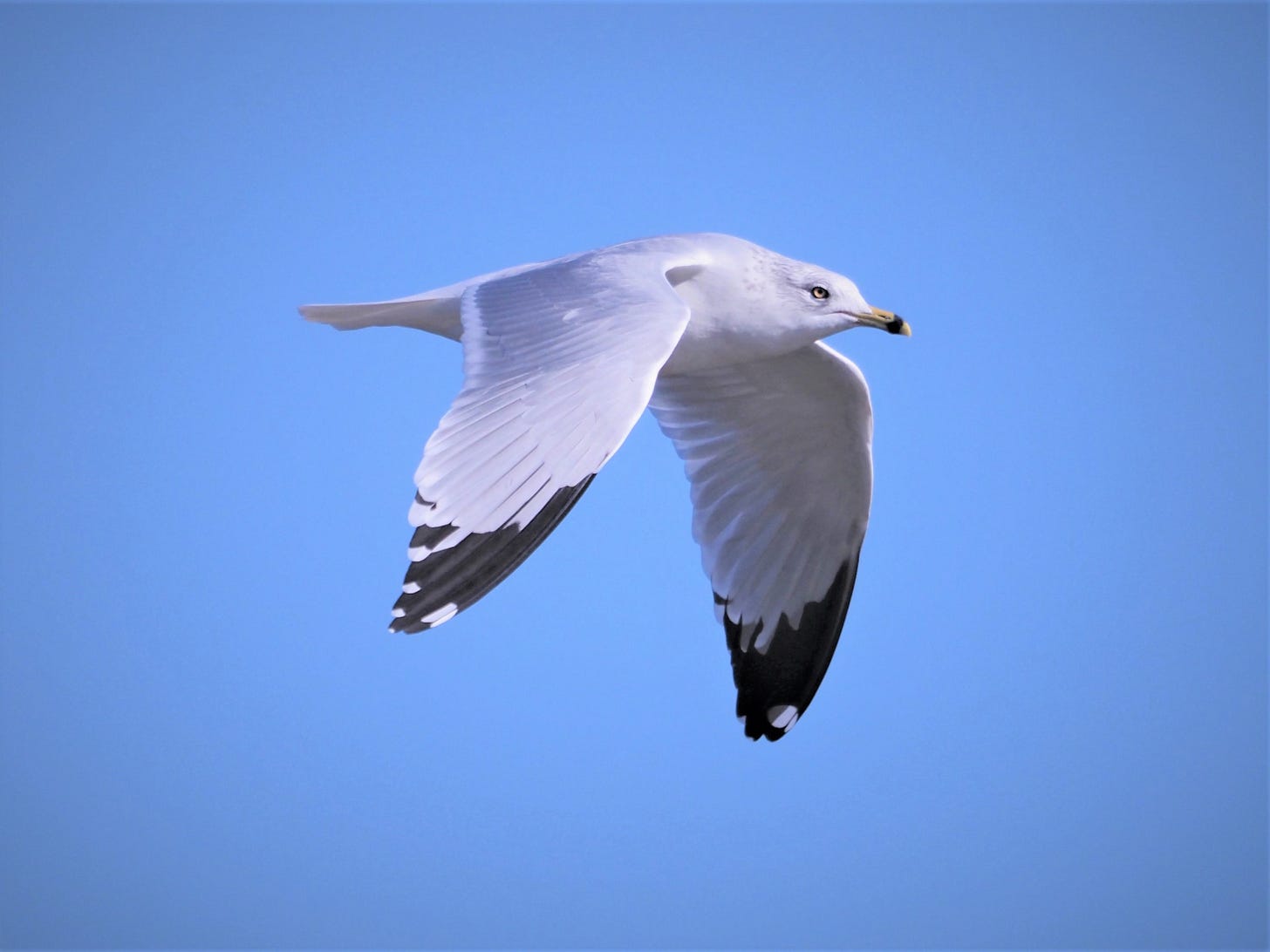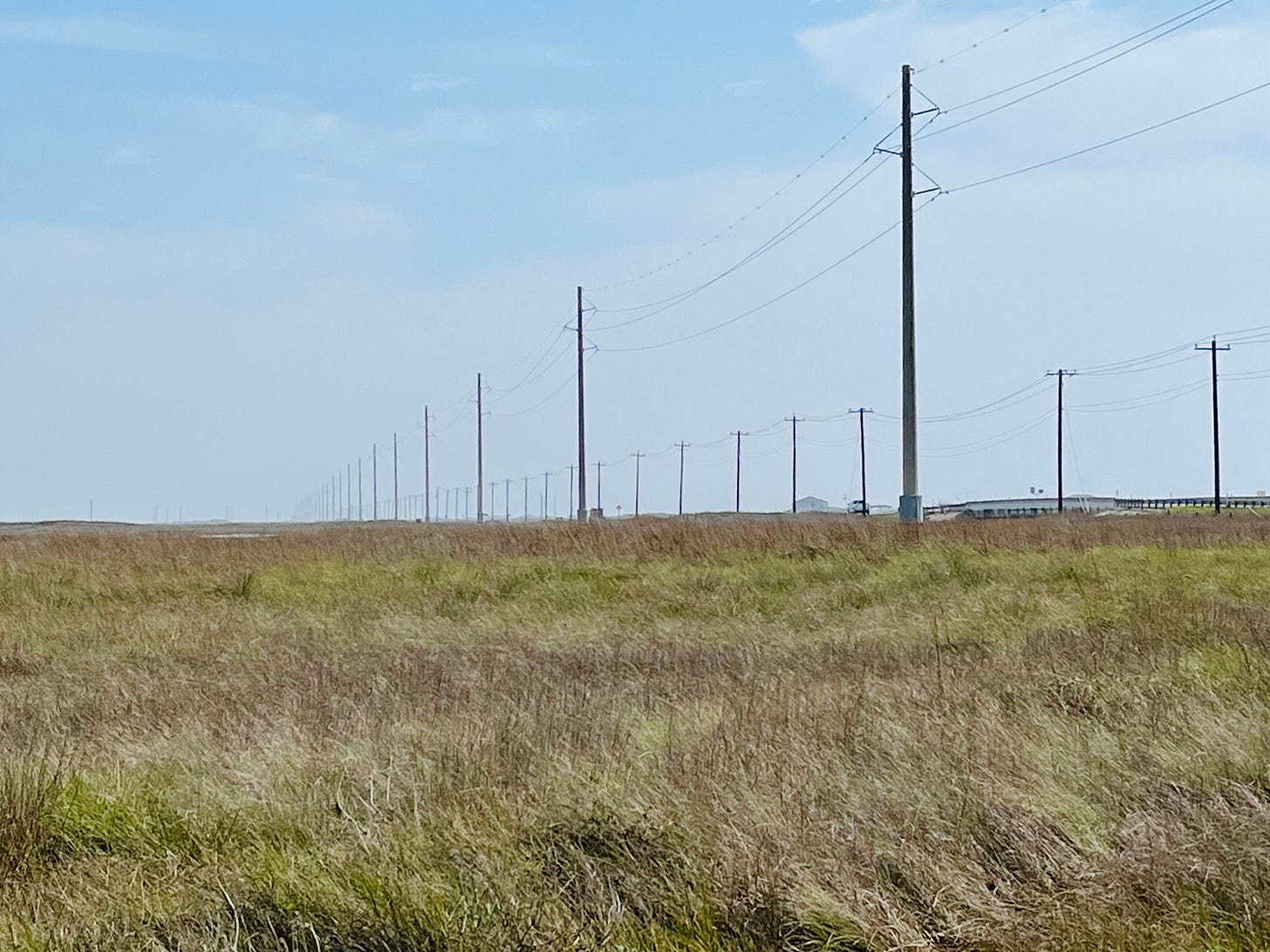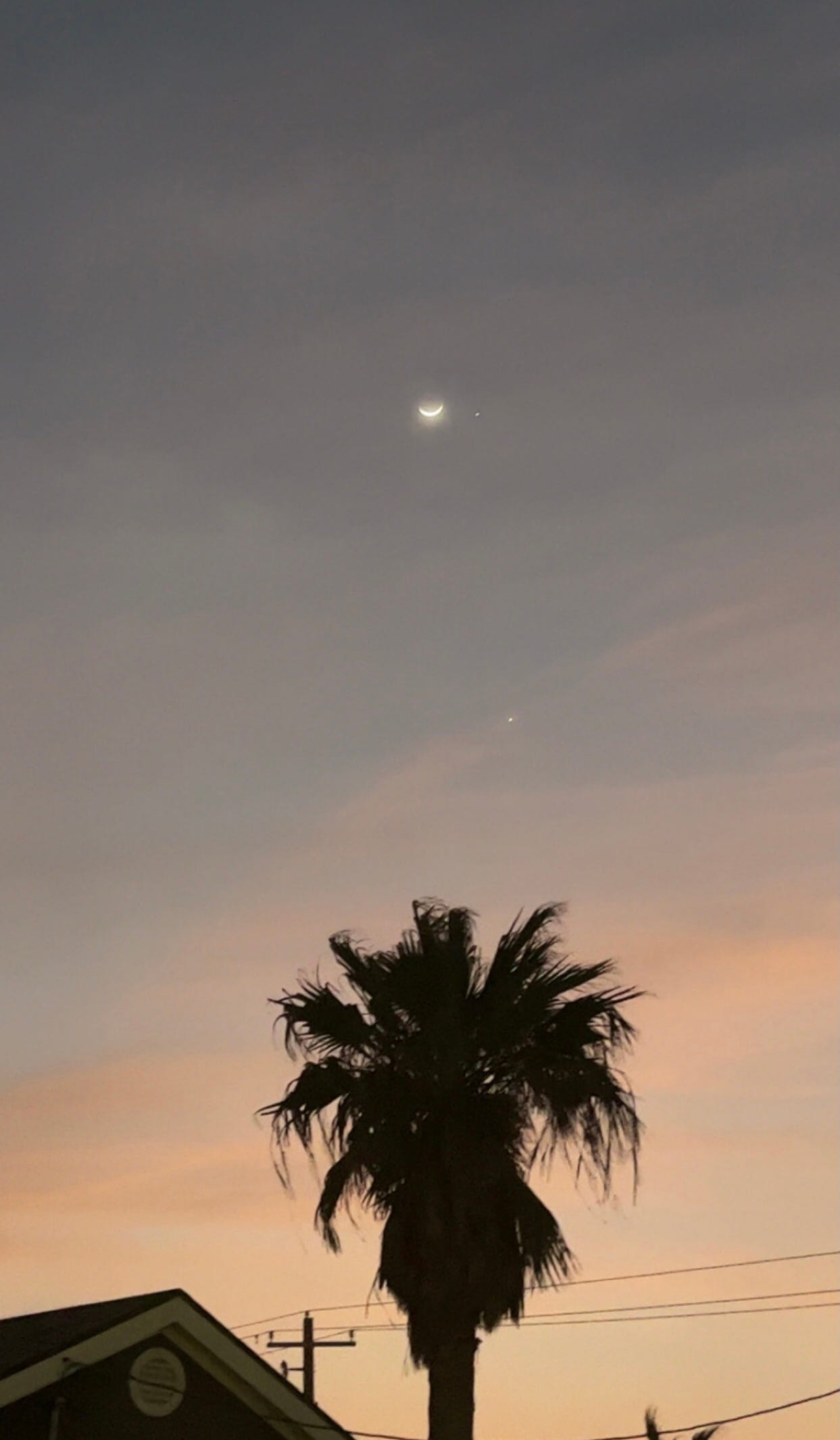(Original version published in March 2023)
(UPDATE: The Best Western Plus in Port Aransas recently changed ownership and got rid of the bed frame that the previous manager bought to accommodate my patient lift. The new owner has so far refused to provide the same accommodation, stating that no new furniture will be purchased until the franchise is remodeled. As of February 2025, no date has been set for the remodel.)
We speed toward the John F. Kennedy Causeway. The bridge connects Corpus Christi to that string of skinny islands that line the Texas Coast. Already I see Snowy Egrets and Great Blue Herons wading along the shore, White Ibises probing beneath the surface with their bright pink bills. Soon we’re gliding like a fleet of Brown Pelicans low across the water.
The road bends and lifts as it crosses the hypersaline Laguna Madre, one of only six such bodies of water on the planet. At 130 miles long and five miles wide, it’s the second largest estuary in the Lone Star State. I imagine tracing that shallow lagoon as it curves gently southward all the way to Mexico.
A Ring-billed Gull rides along beside us, so close I can discern its namesake field mark. Its larger size and lighter gray back also help distinguish it from the dark-headed Laughing that dominates the Gulf.
The fog thickens as we descend onto Padre Island. We turn onto State Highway 361 and cruise across Packery Channel to Mustang Island. In this veiled seaside landscape, my human frustrations vanish. Wishes we would’ve left earlier or circumvented the traffic of San Antonio don’t matter in the presence of such vibrant birdlife. I’ve observed more than ten species in less than 20 minutes. And I spot others in pockets of water we zoom past on either side of 361. Northern Pintail! American Coot! Northern Shoveler!

The island broadens as we sweep through its grassy interior. Here, the dunes insulating us from the ocean give way to a coastal prairie that stretches to the marshy fringes of Corpus Christi Bay. It’s prime habitat for Northern Harrier, among other notable raptors: White-tailed Hawk, Crested Caracara, and a rarity once common in our southern grasslands.
I first eyed the words “Aplomado Falcon” on the American Birding Association Rare Bird Alert. Many birds on the list I tend to scroll past because they seem obscure, beyond my understanding and geographically beyond my reach. But an unusual falcon in Texas? This I had to look up.
Its striking plumage drew me in immediately. Black-and-white stripes fan outward from its hook-shaped bill and yellow-rimmed eyes—a sharp contrast to its dark, slate blue back. Underneath, the dapper falcon sports a tricolored suit. A black vest separates its cream-colored breast from cinnamon slacks. The raptor is just as distinctive structurally. Like a kestrel, its long, pointed wings arc backward from a slender body. But an exceptionally long tail sets it apart from other American falcons.
The Aplomado virtually disappeared from the United States in the 1930s. Explanations abound, but most researchers consider habitat degradation the primary cause. In the 1980s, the Peregrine Fund, in partnership with the US Fish and Wildlife Service, launched a recovery program. The project reintroduced more than 1500 captive-raised chicks to the species’ native habitat. Thanks to these efforts, a small yet enduring population now breeds in tracks of southern Texas and New Mexico.
I would’ve torn south that day had I been able. But the closest sightings were in Cameron County—a full five hours from Austin. I swiftly became overwhelmed with logistical questions. Could I manage a 10-hour day trip and retain enough energy to actually bird? Could my caregiver? Was there an accessible hotel room in the area? Could we transport my patient lift in the van, or travel safely without it? Could I rent one from a DME (durable medical equipment) vendor nearby? Would the company deliver it to the hotel? What if it didn’t fit in my room, or under the bed? How much would all of this cost?
It took months of research before I felt confident that I could go anywhere. And yet my initial forays into the world beyond Central Texas were rocky at best. More like tumbles off the ledge of my adjustable bed, on which I’d also grown dependent. By the time I registered for the 2023 Whooping Crane Festival, I had developed strategies for tackling these obstacles of the road. I acquired a portable patient lift and advocated for my needs. The Best Western in Port Aransas went so far as to purchase a new bed frame that would accommodate my lift! And echoing my good fortune, a pair of those Aplomado Falcons were spotted mere miles away.
We zip over Fish Pass, a channel once cut through Mustang Island that blows past like another inconspicuous dip in the browning blades of grass. The miles count down as we rush toward the Aplomado Viewing Platform I found on eBird. Finally I’ll clap eyes on the falcon that for the last year embodied my limitations. Now, minutes to spare until sunset, it’s a symbol of possibility.
I expect a tall obvious tower on the edge of the highway, a turn-out where we can park and watch. But as we approach the red pin on my iPhone map, I detect nothing of the kind. We’d stand a better chance at locating the platform if we could slow down, but the speed limit’s 60. A train of cars is tightening on our tail, and there's no lane for passing. Pulling over seems similarly unwise, the shoulder narrow like it is.
I lean forward, crane my neck to scan the western horizon. Telephone lines run along the opposite side of 361. I gaze beyond them to an imposing set of overhead lines that eclipse the wooden, cross-armed telephone poles by almost 50 feet. My eyes ascend these cylindrical metal poles to the small black numbers bound to each one.
Many photos I browsed on eBird showed Aplomado Falcons perched on a weathered tower, often with a partially cropped-out number beneath the birds. I had assumed that this was the viewing platform, the only structure I’d notice on the roadside.
I realize now how wrong I was. It was not a platform for Aplomado Falcons but one of these mammoth power poles, of which a hundred or more span to the horizon. They could be posted on any one of these, I think, daunted by the idea.
The falcons appeared large and formidable in those eBird photos. Photographers armed with telephoto lenses had made the power poles seem inconsequential by comparison. In reality, the birds were the minuscule ones—tiny silhouettes atop a stanchion 40 times their size. Even if there is an Aplomado perched up there, I doubt I would see it.
I strain to hold my body in this bent-forward position, my head cocked to survey the highest electrical lines. After four or five miles, I slump back, beat by the effort. We can try again tomorrow, I tell myself, though I’m beginning to think that finding these falcons might be impossible.
I shift my attention to the road ahead and glimpse a huge raptor on a fence post. I jump to White-tailed Hawk, but that’s an idle hope. Facing away from us, it displays only dark brown upper parts and hints of white to base an ID on.
I then remember a detail from Byron Stone’s Raptors Class, how birds of prey favor an erect posture. Two exceptions were Turkey Vultures and Ospreys, which frequently lean forward at a 45° angle, similar to the bird we just passed. It wasn’t an infallible rule, but it could suggest one of these species.
We motor past another sizable raptor, near-identical to the first. This time, perhaps because I’m looking for it, I note a dark eye stripe against an otherwise whitish head. “It’s an Osprey!” I announce, grateful for the second chance at identification.
I tally the day’s 20+ species, proud I was able to identify each one without exiting the van. We check into the hotel, then head over to Jay’s Seafood and Spaghetti Works to celebrate our accessible room. The orange vestiges of sunset surrender to the gray-blue twilight. A crescent moon hangs aloft.
Over margaritas and tempura-fried shrimp, we speak eagerly of the adventure before us: boat tours, bird walks, gift shops, restaurants. Each square foot is new, unexplored territory. Yet this bright air of anticipation belies my restlessness. All I can think about are birds, birds I can’t see at night.
(Stay tuned for Part Two!)
Enjoy the birds,
Eric











give me the address for the best western in aransas and I will send them a thank you and an attaboy.